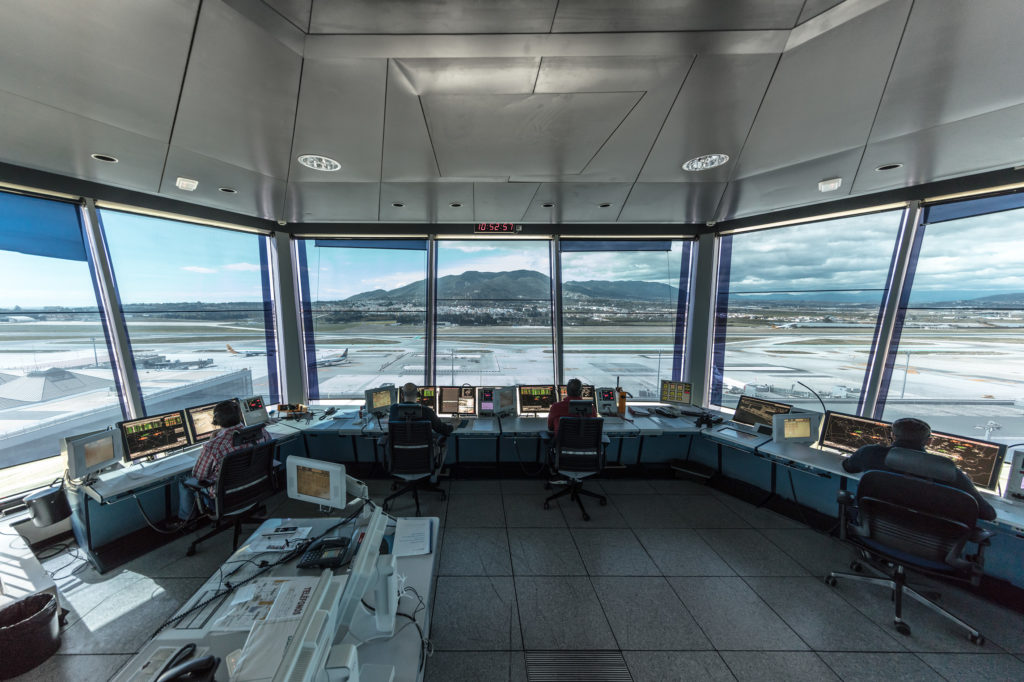ENAIRE invests more than 1.3 million euros in its automated and digital drone management platform (U-Space)

ENAIRE, Spain’s national air traffic manager, has awarded the contract to develop its automated and digital drone management platform (U-Space) in Spain, worth 1.349 million euros, excluding taxes. The company’s Board of Directors, which met for the first time under the presidency of the State Secretary for Transport, Mobility and the Urban Agenda, Isabel Pardo de Vera, was informed of this crucial award for the development of the drone sector in Spain.
This investment will allow ENAIRE to be ready to provide U-Space services for the automated management of drone operations beyond visual line of sight (BVLOS) in airspace volumes called “U-Space airspace”, and specifically, to centralise the management of CIS (Common Information Services), which are essential to safely support drone operations once the new European Regulation, which determined the requirements for this contract, enters into force in January 2023.
As a supplier of common information services, ENAIRE will be the sole facilitator of operational information and data, and interface between conventional air traffic service providers and U-Space service providers, which are the entities that will provide these services to drone operators.
In accordance with the “single CIS Provider” architecture of the U-Space regulation, ENAIRE’s U-Space platform will be among the first developments in U-Space systems in Europe to differentiate and centralise the common information services, making this endeavour a benchmark not only in Spain, but internationally as well.
In its initial phase, ENAIRE’s U-Space platform has been designed to provide U-Space services to end users by conducting the tests needed to validate different types of drone operations, and carrying out the certification process required by the Regulation.
Subsequently, in 2023, the platform will be divided between a “single CIS Provider” (CISP) and a U-Space Services Provider (USSP) for public administrations and entities, with other USSP suppliers entering the competitive market for the remaining users.
The contract has been awarded to Indra, in partnership with AIRBUS and Unifly, with an execution timeline through 2023, extendable by 24 months.
With this investment, ENAIRE, in addition to allowing Spain to comply early with the U-Space implementing regulation, will safely provide for the automated management and integration of drone operations into the airspace, allowing the drone services market to grow in Spain.
The launch of this platform will involve the continuation of the successful initiatives previously introduced by ENAIRE, namely ENAIRE Drones in 2018 (drones.enaire.es) and ENAIRE Planea (planea.enaire.es) in 2020, as well as the materialisation of the entire experience and knowledge gained in the DOMUS Project selected by the SESAR JU as part of its call for U-Space Demonstrators in 2018.
What is U-Space?
The last few years have seen exponential growth in the demand for drone operations, driven by new drone applications. This makes it necessary to have a highly specific and digitised set of services that can be used to safely, efficiently, sustainably and affordably integrate the automated management of a large number of simultaneous drone operations in the same portion of airspace.
The European Commission took the political initiative in late 2016 to establish and deploy the concept of automated management of drone operations, called U-Space, in the European Union.
U-Space will enable all kinds of drone operations, from the simplest (taking photos while walking along a field) to the most complex (operations in high-density urban environments), integrating them safely into the same airspace that is used for the conventional operations that are now managed by air navigation services.
The various U-Space services will be phased in during the coming years. As concerns the technological innovation and development needed to deploy and support the U-Space concept, the European Commission is relying on the SESAR programme of the SESAR Joint Undertaking, which is part of a large-scale project that is being undertaken to demonstrate the safe future deployment of the technologies needed for U-Space services.
On 22 April, the EASA Committee published the Commission Implementing Regulation on the Regulatory Framework for U-Space, which will come into force on 26 January 2023, and in the coming few months, EASA will publish a set of additional supporting regulatory proposals.
ENAIRE U-Space initiatives in Spain
The Ministry of Transport, Mobility and the Urban Agenda published the Safe, Sustainable and Connected Mobility Strategy in late 2020. Part 5 of this strategy, on Smart Mobility, highlights U-Space services as a driver of growth in the Spanish drone services sector. This Mobility Strategy will enable the safe integration of Urban Air Mobility into smart cities, and identifies as essential the deployment and operation by the Common Information Services Provider (CISP) to support the provision of these services and the integration of recurring and dense drone operations into the national aviation system with high integrity rates.
ENAIRE has conducted several tests to integrate drones. Of particular importance is the DOMUS project that ENAIRE led in 2019. This U-Space demonstration consisted of exercises where real drone flights combined with manned aircraft were tested in controlled and uncontrolled airspace. It was the first demonstration in Spain in a real drone management setting using U-Space services, which showcased this Spanish initiative in Europe.
ENAIRE is involved in European projects as a founding partner of the European Commission’s SESAR Joint Undertaking public-private alliance. This group researches and tests these airspace concepts involving drones by using applications that will help to manage urban air mobility (UAM), and which will include, among others, parcel deliveries and air taxis in cities. Shifting certain activities to drones will mean a sharp reduction in the emissions of polluting gases compared to land transport methods.
In order to test how to integrate drone traffic into our airspace, ENAIRE is currently working in European consortiums with the most innovative companies in the industry to demonstrate the viability of the UAM concept. Of note are the CORUS-XUAM, AMU-LED and Uspace4UAM projects, which will conduct various exercises in Spain, namely in Castelldefels in Barcelona, Santiago de Compostela, and Villacarrillo in Jaén, respectively.
